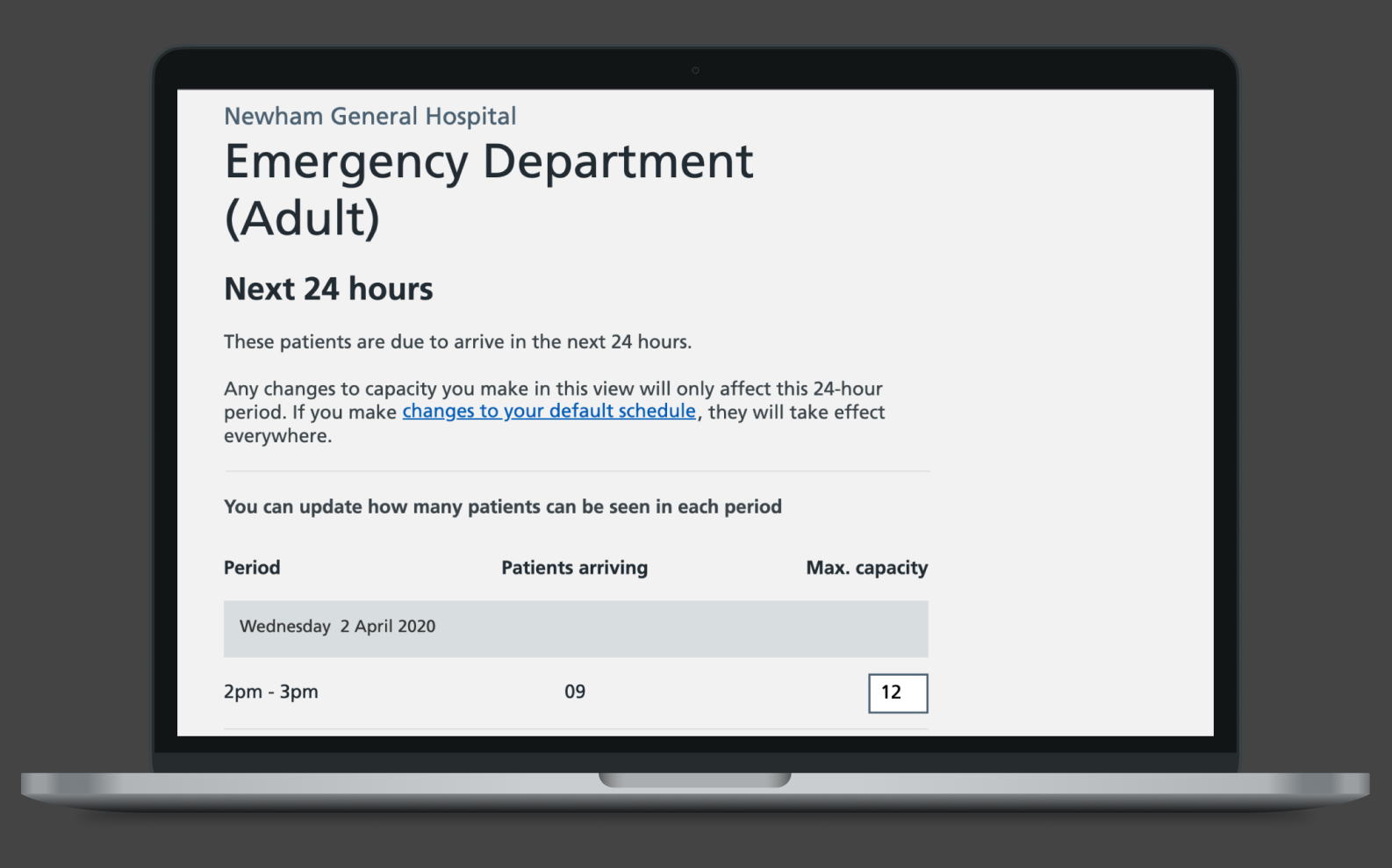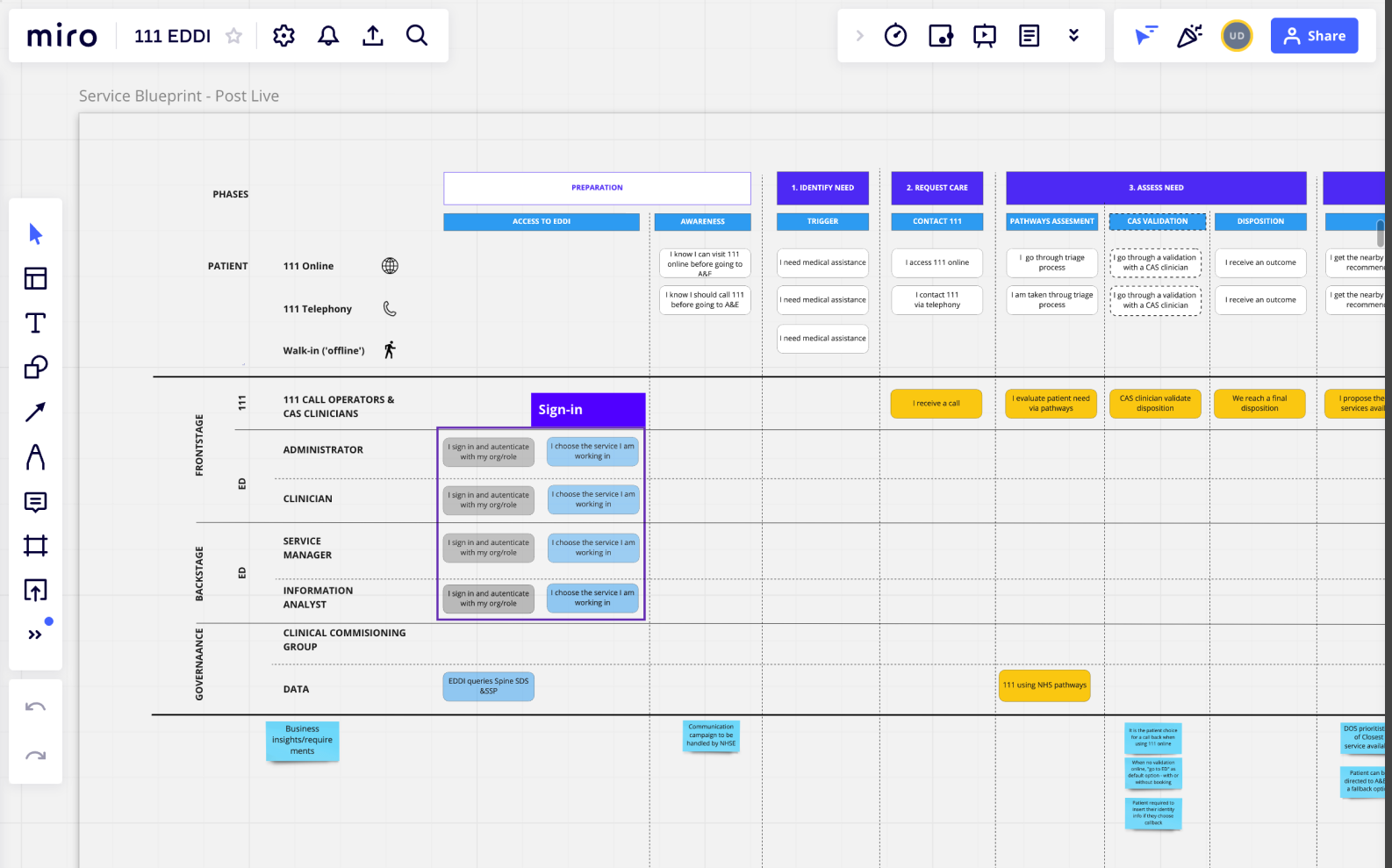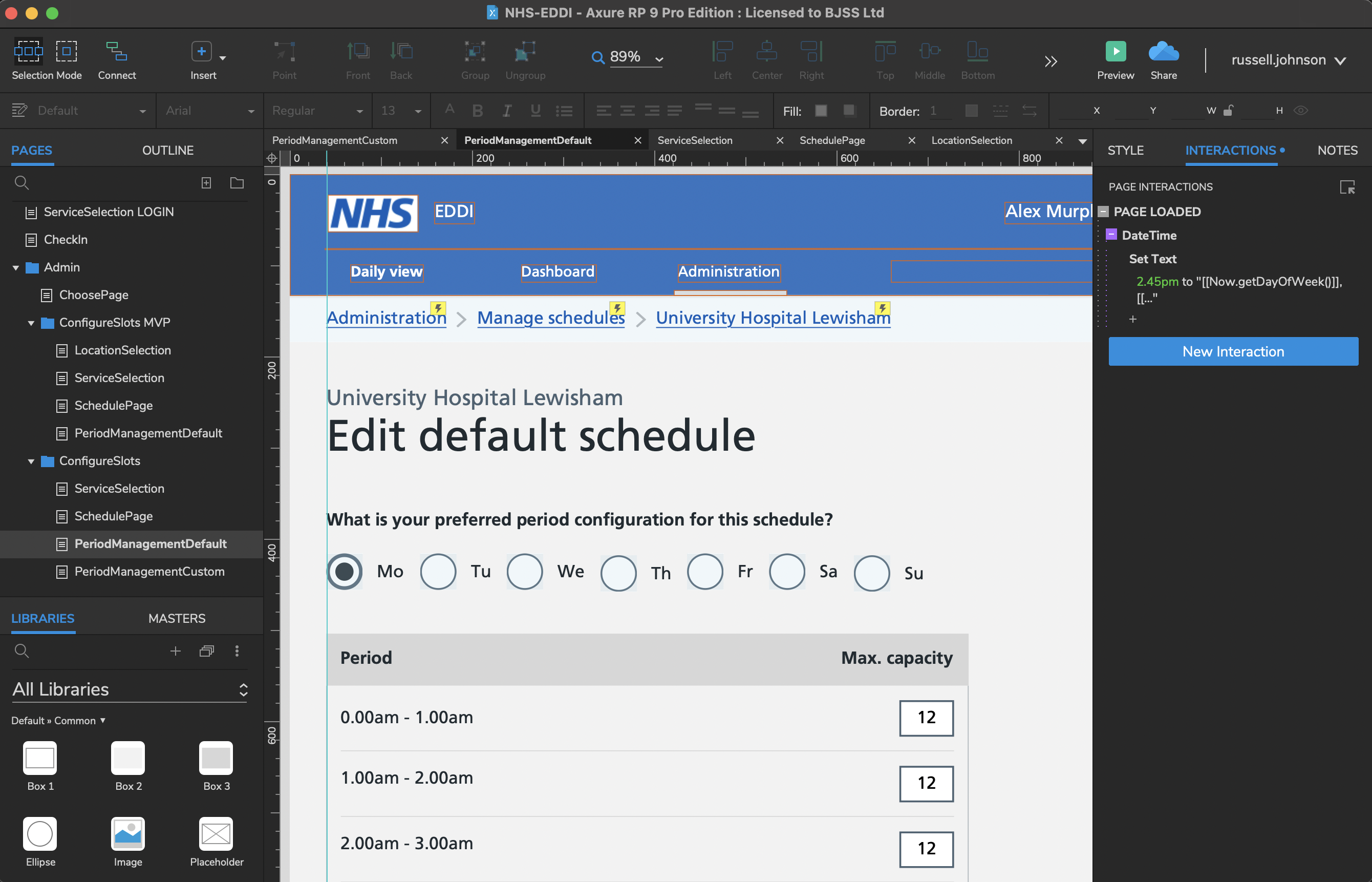Emergency Department Digital Integration (EDDI)
During the March 2020 lockdown, Emergency Department (ED) attendances fell sharply, while use of NHS 111 Online rose significantly. Since then, ED attendance has steadily increased, approaching pre-COVID levels.

Challenge
This created an urgent clinical and operational need to prevent a repeat of the overcrowding seen in winter 2019/20. The key concern was that overcrowded EDs could accelerate transmission of the SARS virus.
To mitigate this risk, a staggered slot booking system was developed and integrated with 111 Online call centres, helping to better manage patient flow and reduce overcrowding in EDs.
To address this problem, a staggered slot booking system was devised to integrate with 111 Online call centres, with the aim of managing overcrowding in EDs to the greatest extent possible.
What we did
Understanding context
To establish a strong foundation for the project, we worked closely with a Service Designer and a Researcher to document and understand the service’s context of use. Emergency Departments (EDs) operate under intense pressure, making it essential that the service integrated seamlessly into the existing processes of front-desk staff. This early research proved critical in ensuring the proposed solution would minimise disruption for the administrative staff responsible for using it.

Designing at pace
The decision to begin developing design solutions quickly was a calculated risk, justified by the urgent need to deliver a functional solution. This was particularly important given the complexity of the problem and the potential clinical risks of extended research phases.
Through remote, collaborative design sessions, a multifaceted journey was created to meet the needs of diverse users in both clinical and administrative contexts.
The proposed solution allowed 111 Online callers to be assigned a preferred attendance window at their nearest ED, based on the severity of their condition. ED check-in staff could then track arrivals, marking patients as “arrived” upon their presentation.
The system also enabled NHS Trusts to manage capacity according to staffing, clinical resources, and other local factors, mitigating clinical risk if national or local emergencies made staggered arrivals infeasible.
Testing with users
Building on the NHSD design guidelines, we developed Axure prototypes to engage users and validate our ideas. Given the fast-paced environment of EDs, we focused on minimising cognitive load, presenting only essential information, and enabling arrivals to be actioned with a single click.
Feedback from usability testing informed iterative refinements, quickly producing a solution that met the needs of clinicians, administrative staff, and patients. Using annotated design assets, the service was then implemented and deployed in an exceptionally short timeframe.

Using Axure to prototype key journeys

Using Axure to prototype key journeys
My role
As a consultant working for SPARCK/BJSS, but also alongside permanent NHSD team members and civil servants, my postion was as Lead Designer. My duties included:
Outcomes
Since the launch of the NHS, a notable reduction in overcrowding in Emergency Departments (EDs) across England and Wales has been recorded. The question of whether this has had an impact on the spread of the virus is not easily answered, but it seems reasonable to conclude that the effect has been beneficial. It is also noteworthy that the service has subsequently been subject to a GDS peer review to ensure it meets service standards, which it has passed.
